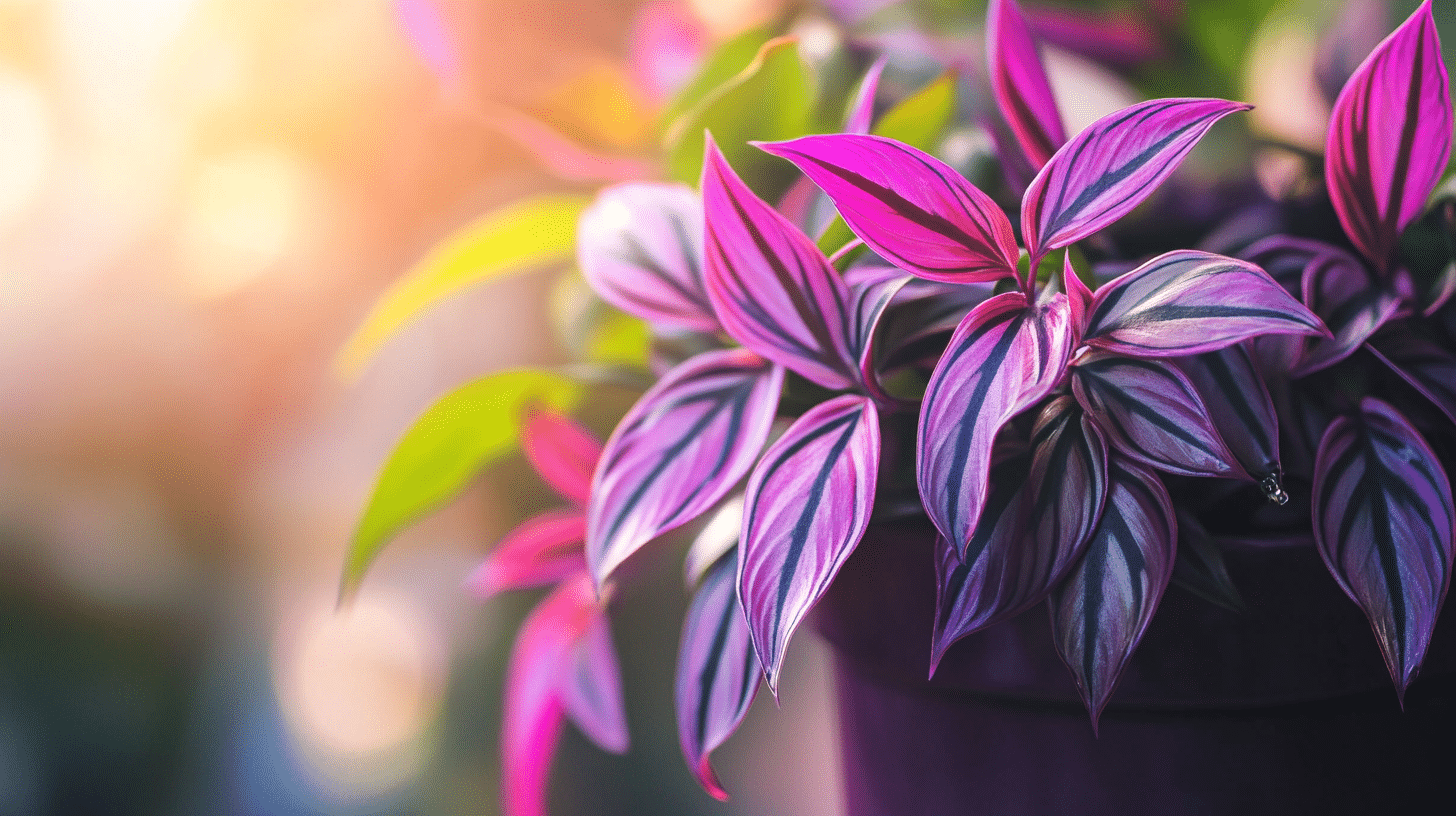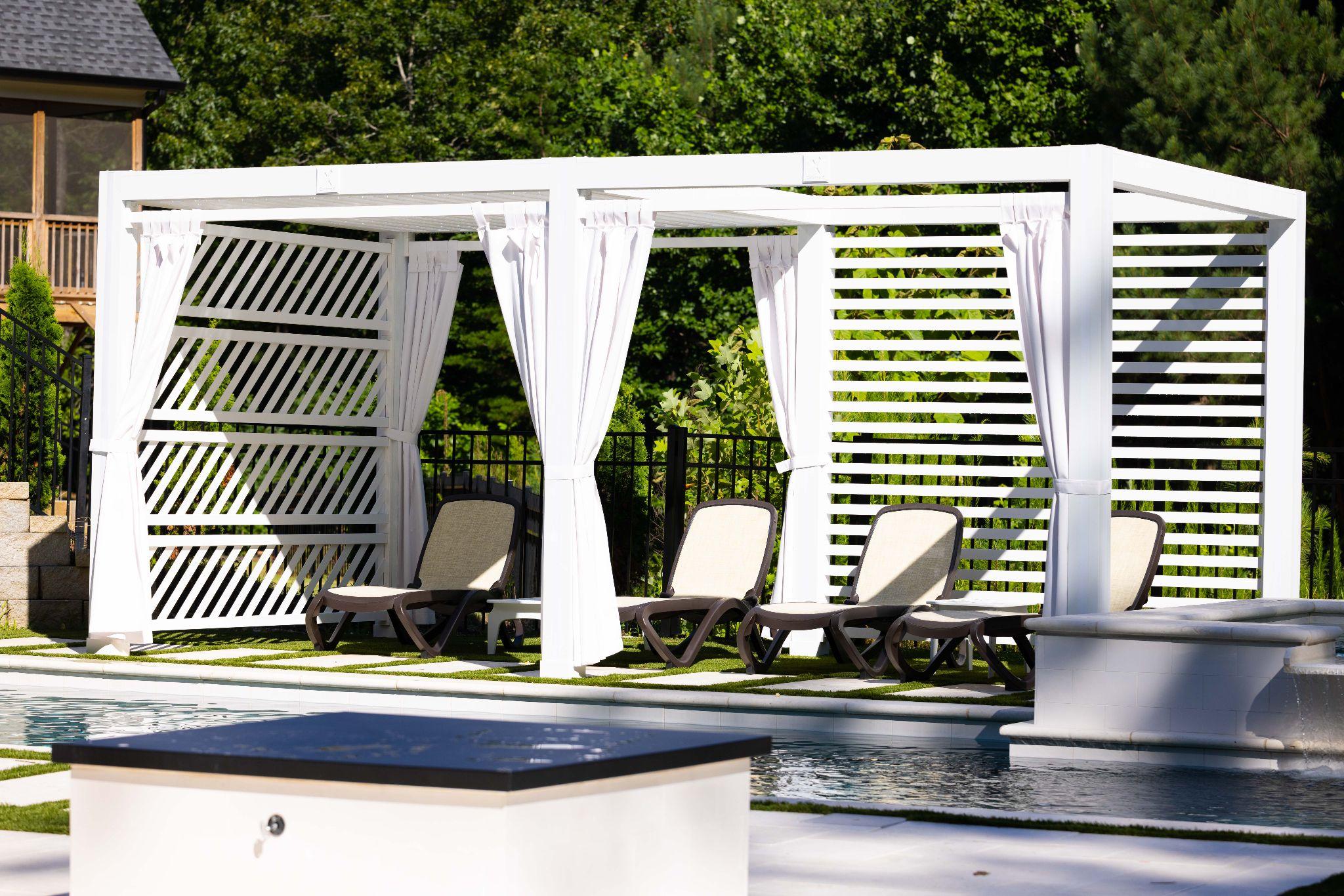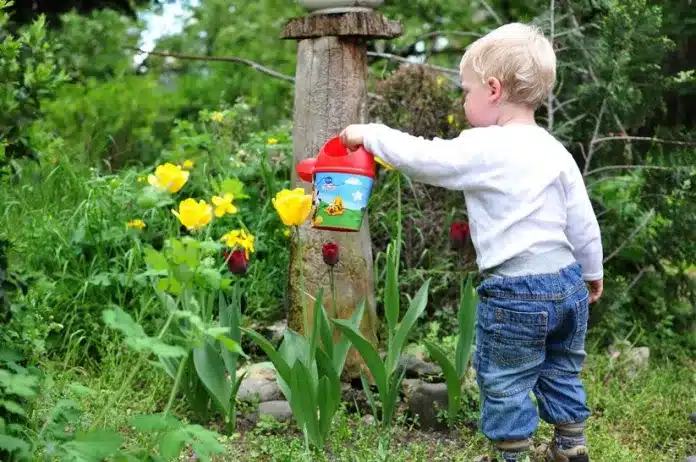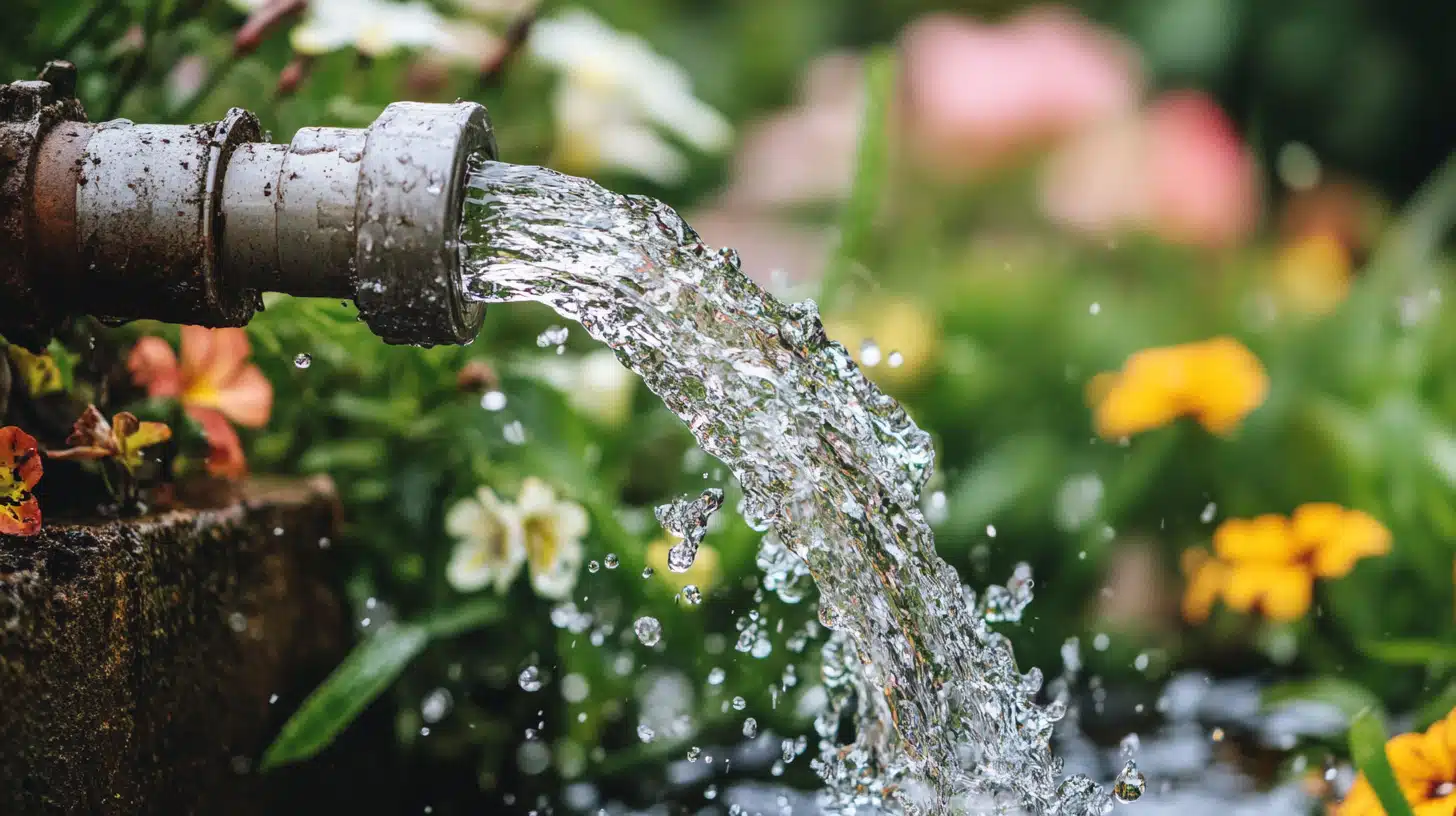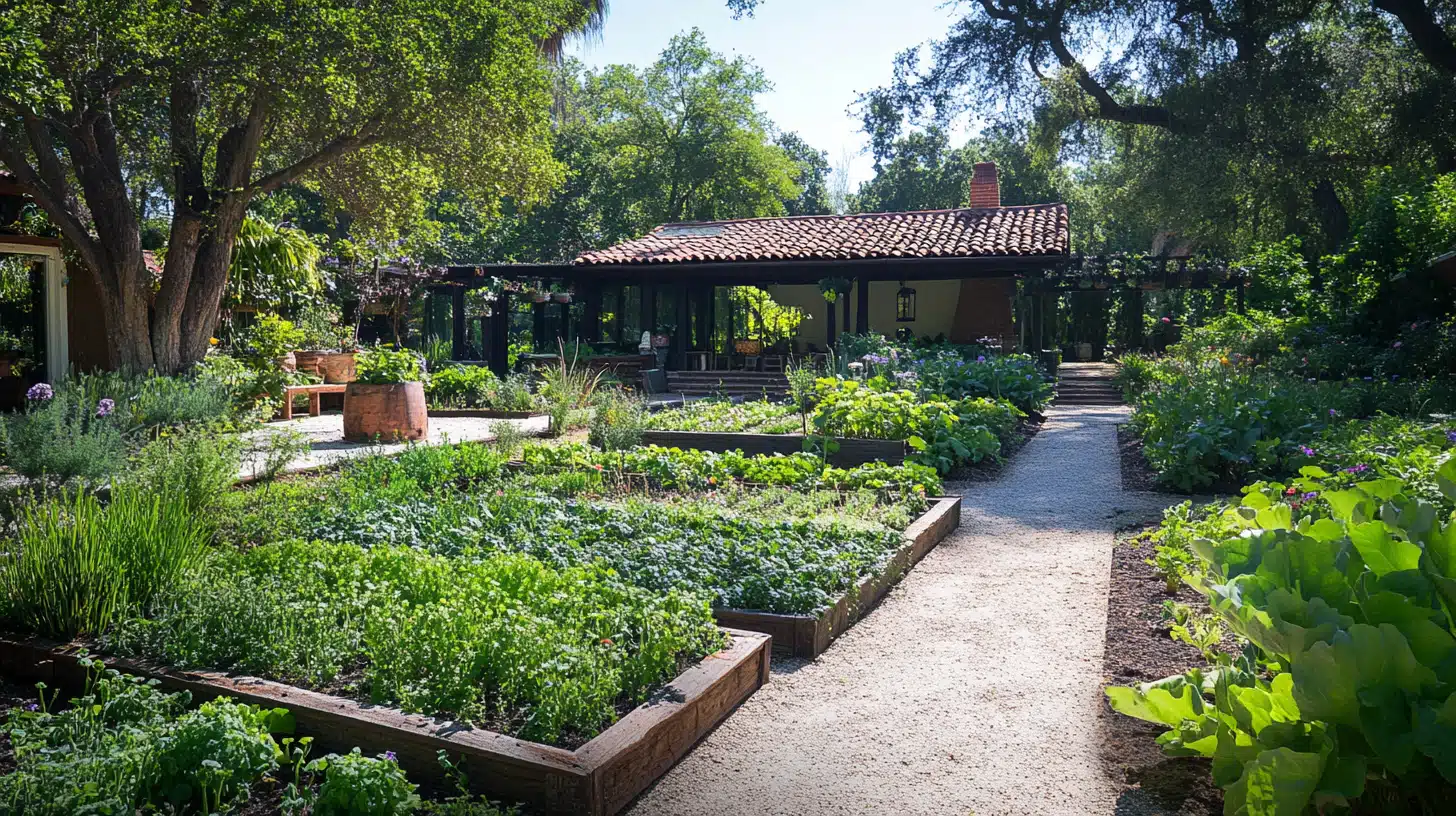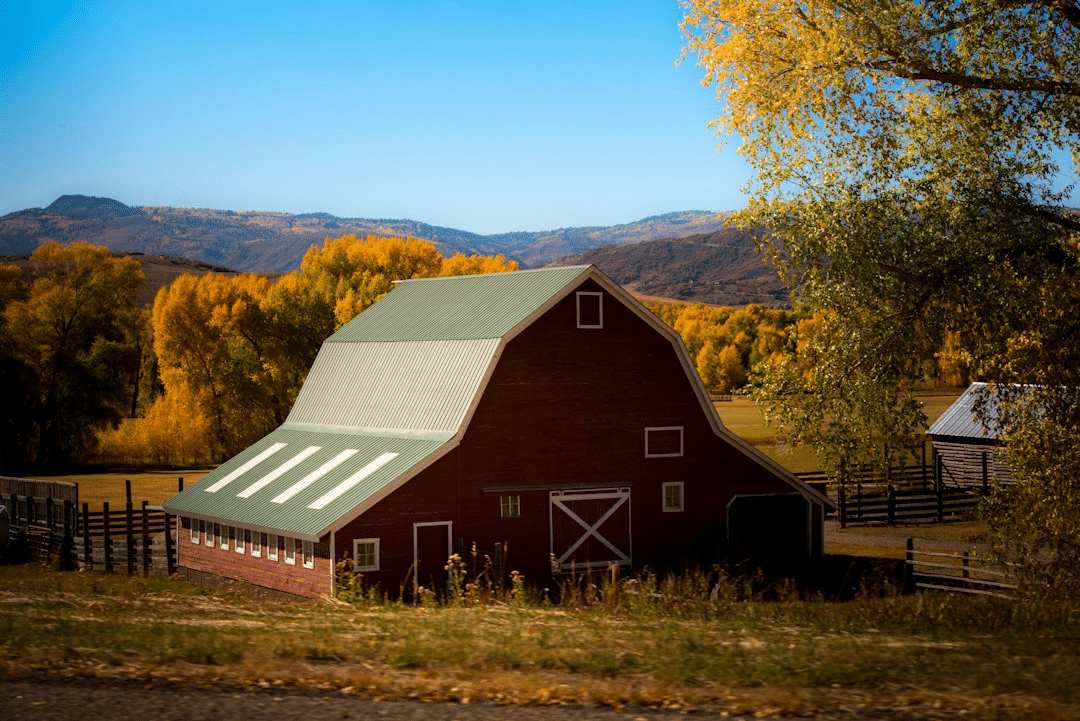The Wandering Jew: Care, Varieties, and Propagation Tips
Tradescantia zebrina is a striking houseplant known for its colorful, striped leaves. Often called the inch plant or spiderwort, it’s also called “Wandering Jew.”
However, this name has roots in harmful stereotypes, leading many to adopt “Wandering Dude” instead. This fast-growing, easy-care plant has become a favorite among indoor gardeners.
Its trailing stems and vibrant foliage make it perfect for hanging baskets or as ground cover in warm climates. Native to Mexico and Central America, Tradescantia zebrina adapts well to various indoor conditions.
This plant adds beauty to homes and helps clean indoor air. Whether you’re new to plant care or an experienced grower, this resilient species offers visual appeal and simple maintenance, making it a top choice for plant enthusiasts.
Understanding the Tradescantia Zebrina
Tradescantia Zebrina, often called the inch plant, is a pretty houseplant that catches the eye. It has long, flowing stems and leaves with bold stripes.
The heart-shaped leaves are a mix of colors. You’ll see deep green, purple, and silver on one leaf.
The plant gets its name from its striped look. The stripes on the leaves make people think of zebras. These plants grow fast and can spread out wide.
They’re great for hanging baskets or placing them on high shelves where their stems can trail down.
Tradescantia Zebrina is native to Mexico and parts of Central America. In the wild, it grows on the ground in woodlands and fields.
It likes warm weather and doesn’t like very cold places. The plant has learned to grow around other plants, using them for support.
Tradescantia Zebrina is easy to care for in homes. It can bounce back even if you forget to water it now and then, making it a good choice for people new to growing plants or traveling often.
Varieties and Related Species of The Tradescantia Zebrina
Tradescantia Zebrina is part of a big plant family. Many types look alike but have small differences. Let’s look at some of them:
The Three Types of Tradescantia Zebrina
1. Tradescantia Zebrina ‘Violet’
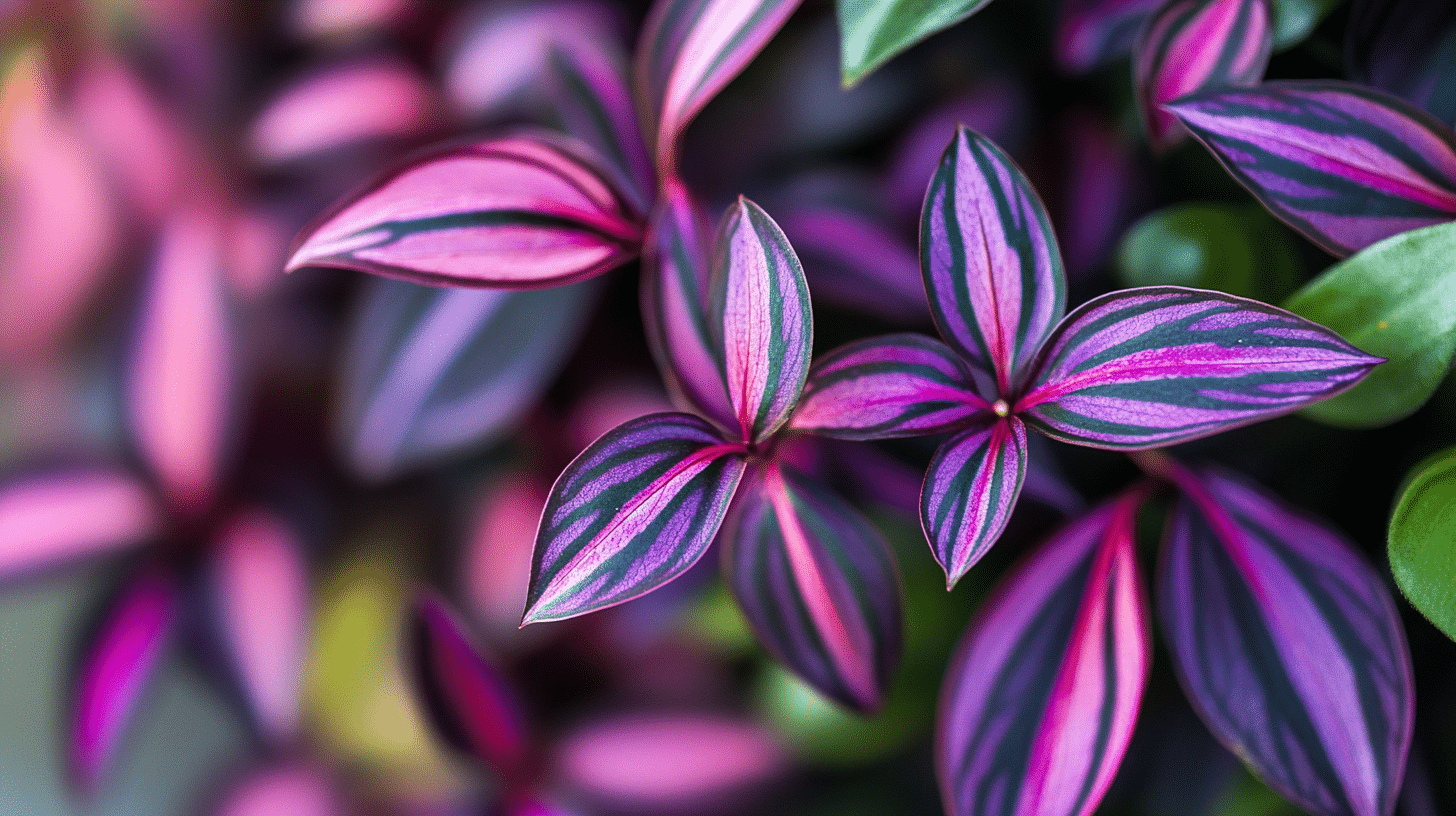
This type has leaves with deep purple and green stripes and a bright purple bottom. It’s a fast grower and looks great in hanging pots.
2. Tradescantia Fluminensis ‘Quicksilver’
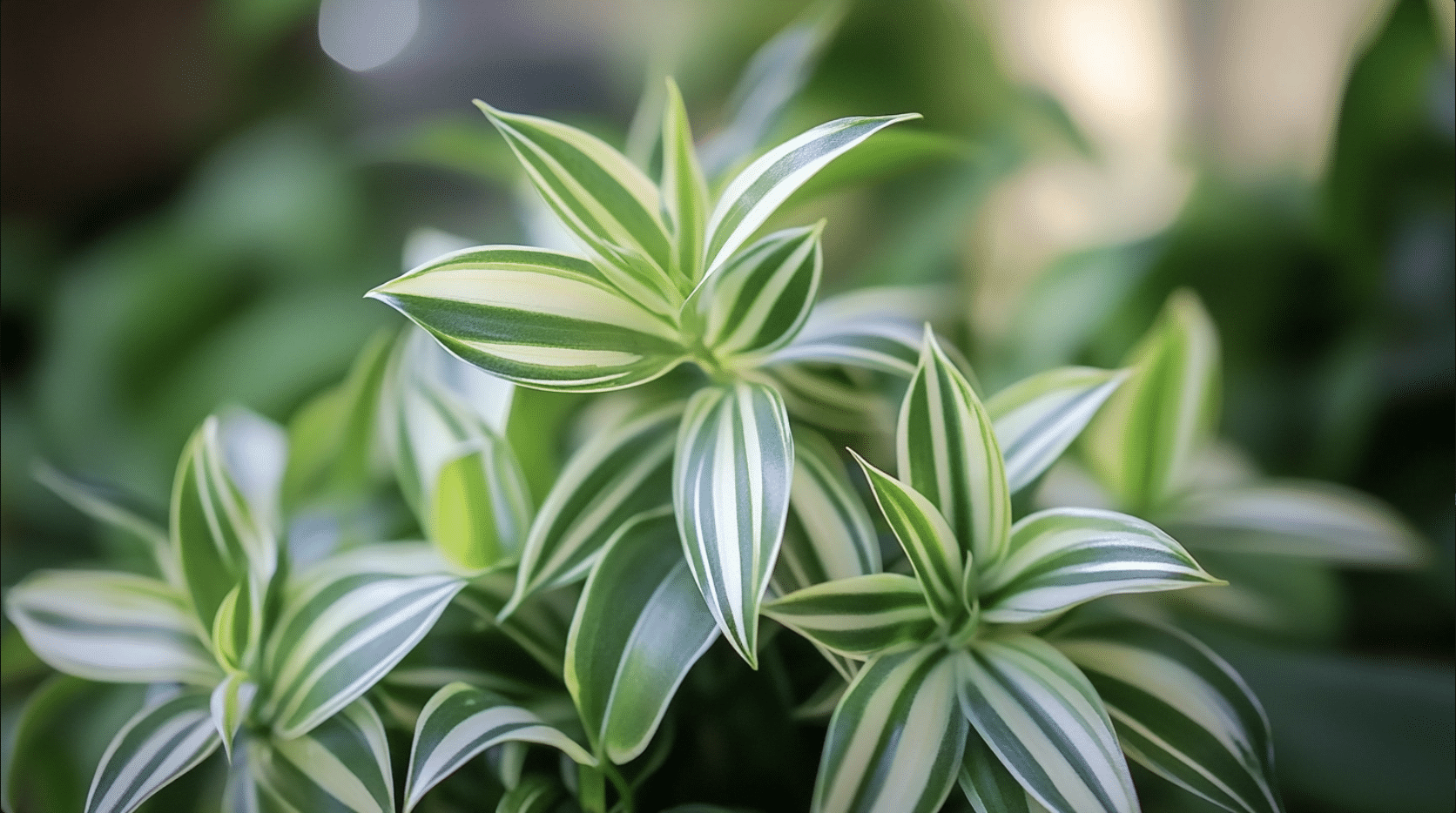
This plant has green leaves with white stripes. It grows well indoors and can make a room look brighter.
3. Tradescantia pallida ‘Purple Heart’
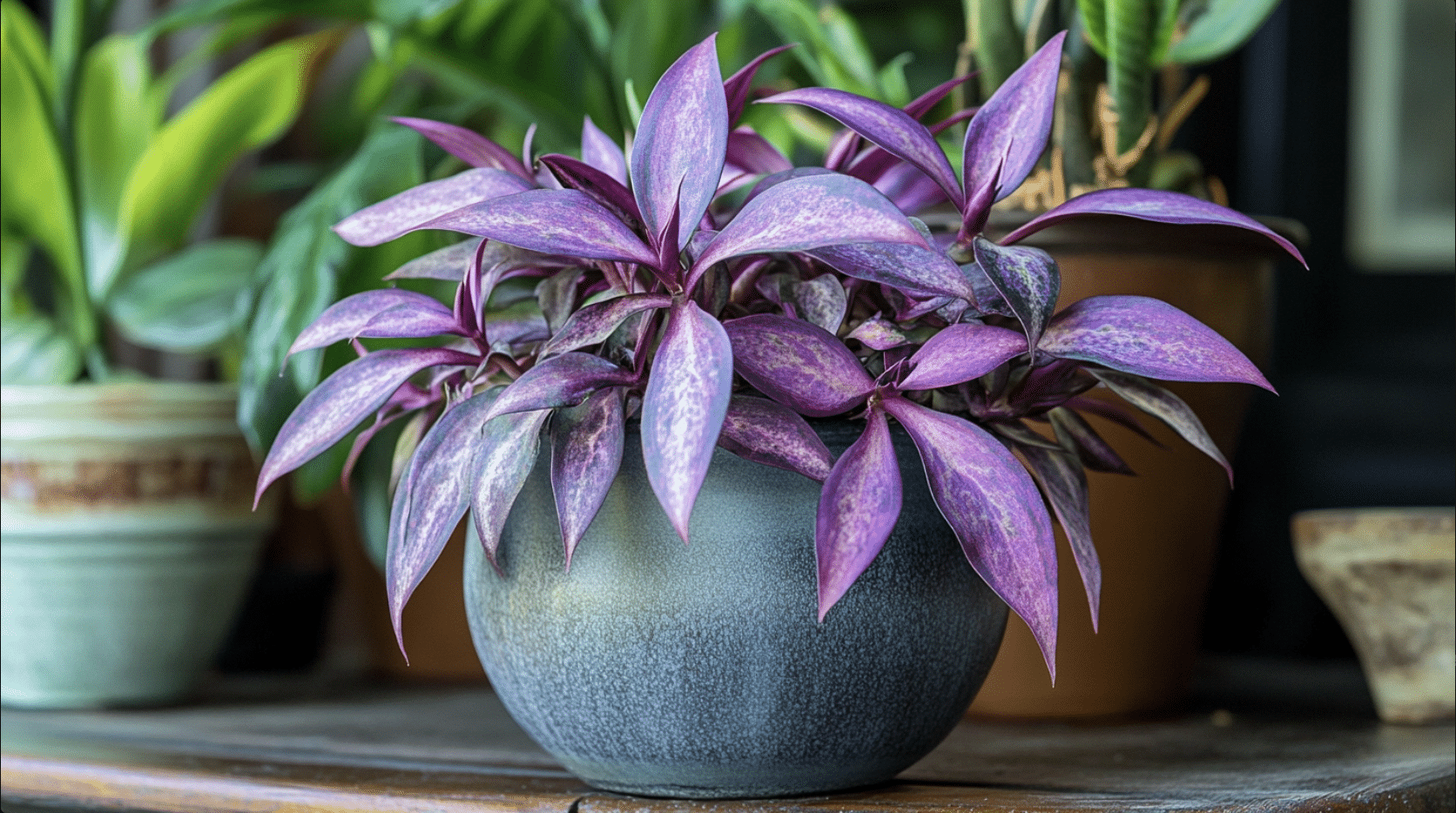
As its name suggests, this plant has mostly purple leaves. The leaves are long and pointed. It can grow flowers that are pink or purple.
Other Varieties of Tradescantia Zebrina
Besides these main types, there are other kinds of Tradescantia Zebrina:
- ‘Quadricolor’: This plant has leaves with four colors – green, purple, pink, and white.
- ‘Red Gem’: The leaves of this plant are mostly red or deep purple.
- ‘Silver Plus’: This type has more silver on its leaves than the usual Zebrina.
These plants are easy to grow and care for. Their bright colors and trailing stems can make your home look more lively.
The History and Controversy of The Name ‘Wandering Jew’
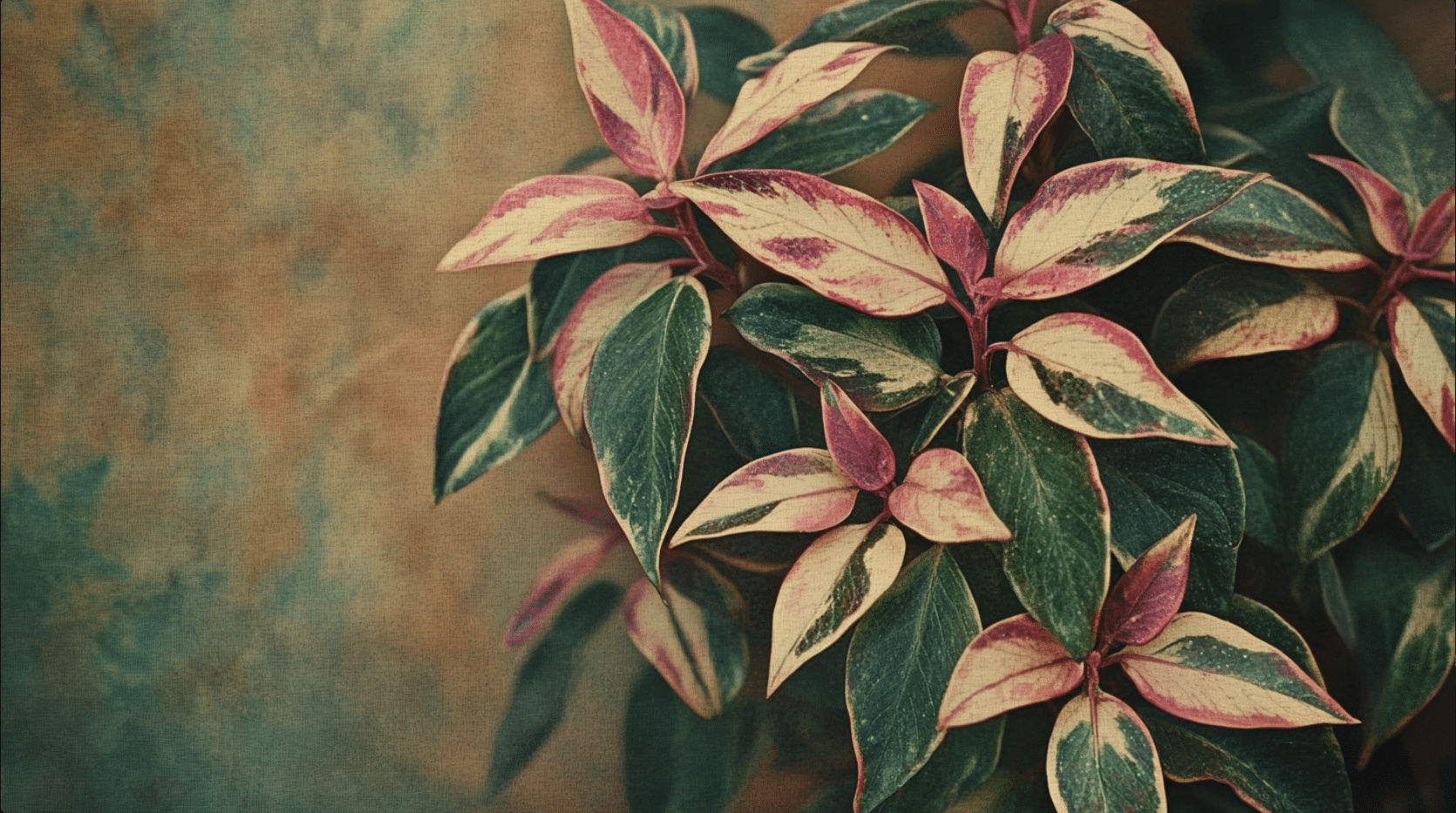
For a long time, people called Tradescantia Zebrina by another name. This old name has caused some problems. Let’s talk about why.
The History Behind the Name ‘Wandering Jew’
The name ‘Wandering Jew‘ comes from an old story. This story is not from the Bible, but people have told it for many years. In the tale, a man was mean to Jesus and had to walk the earth forever.
People used this name for the plant because it grows and spreads quickly. The plant can “wander” and grow in many places. But the name has a dark side. It has been used to say bad things about Jewish people.
Why We’re No Longer Using the Name?
Today, we know that using this name can hurt people’s feelings. It’s tied to old ideas that were not kind to Jewish people. Many plant lovers now think using other names for this plant is better.
Instead, we can call it by its science name, Tradescantia Zebrina. Some people also use names like:
- Inch plant
- Wandering dude
- Spiderwort
These names describe how the plant looks or grows without hurting anyone. Using these names helps ensure everyone feels good about this pretty plant.
Nurturing Your Wandering Jew Plant: Tips for Success
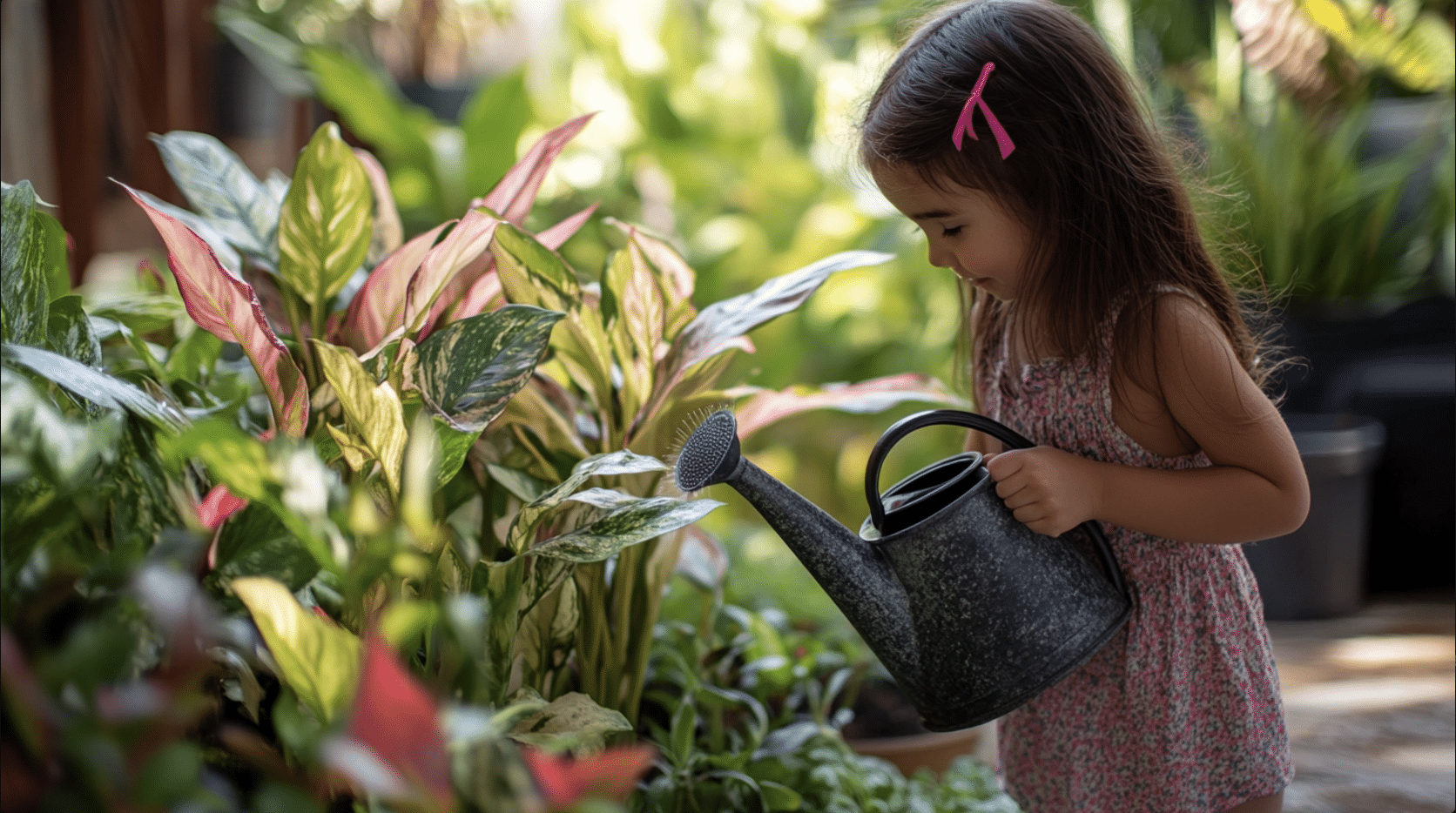
Taking care of Tradescantia Zebrina is not hard. Here’s what you need to know:
- Light: This plant likes bright light but not direct sun. Too much sun can make the leaves lose their pretty colors. A spot near a window with a sheer curtain is perfect.
- Water: Water your plant when the top of the soil feels dry. Don’t let it sit in water, which can harm the roots. In winter, you can water it less often.
- Soil: Use well-draining soil. Mix potting soil with sand or perlite to help water flow through.
- Temperature: Tradescantia Zebrina likes warm places. Keep it in a room that’s between 60 and 80 degrees Fahrenheit. It can’t handle very cold weather.
- Humidity: This plant enjoys damp air. To moisten the air, mist it often or put a water tray near it.
- Fertilizer: Feed your plant with liquid food every month during spring and summer. Don’t feed it in fall and winter when it grows slower.
- Pruning: Cut off long stems to keep the plant bushy. You can use these cuttings to grow new plants.
- Pests: Watch out for small bugs like spider mites. If you see any, wash the leaves with water or use a safe bug spray for plants.
With these simple steps, your Tradescantia Zebrina will grow and look great in your home.
A Simple Guide on Propagating the Tradescantia Zebrina
Growing more Tradescantia Zebrina plants is easy and fun. You can do it in water or soil. Let’s look at both ways:
How to Propagate Tradescantia Zebrina in Water
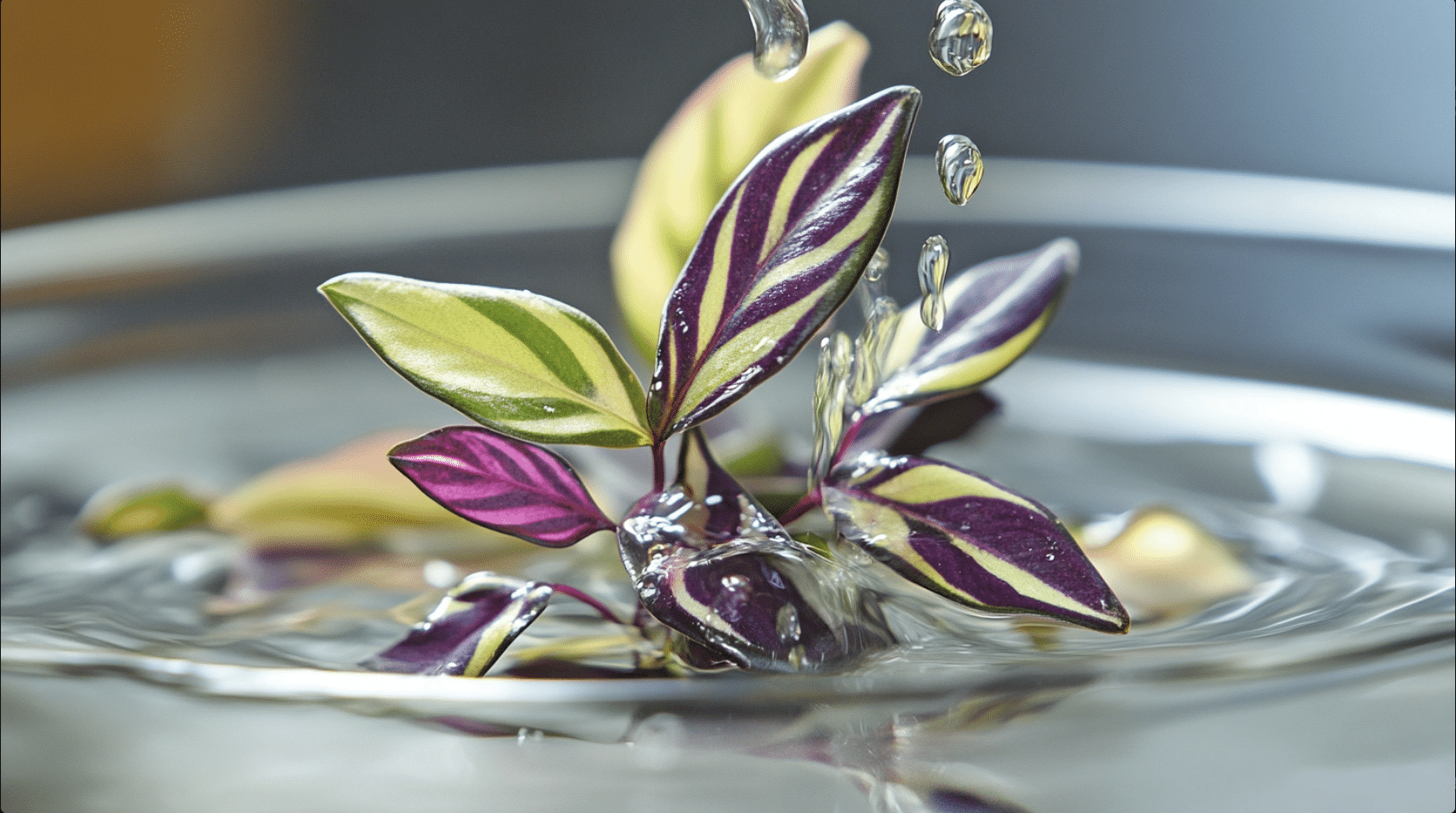
- Cut a healthy stem about 4 to 6 inches long.
- Remove the leaves from the bottom part of the stem.
- Put the stem in a clear glass with water.
- Place the glass in a spot with bright, indirect light.
- Change the water every few days to keep it fresh.
- In about a week, you’ll see tiny roots growing.
- When the roots are a few inches long, you can plant it in soil.
How to Propagate Tradescantia Zebrina in Soil
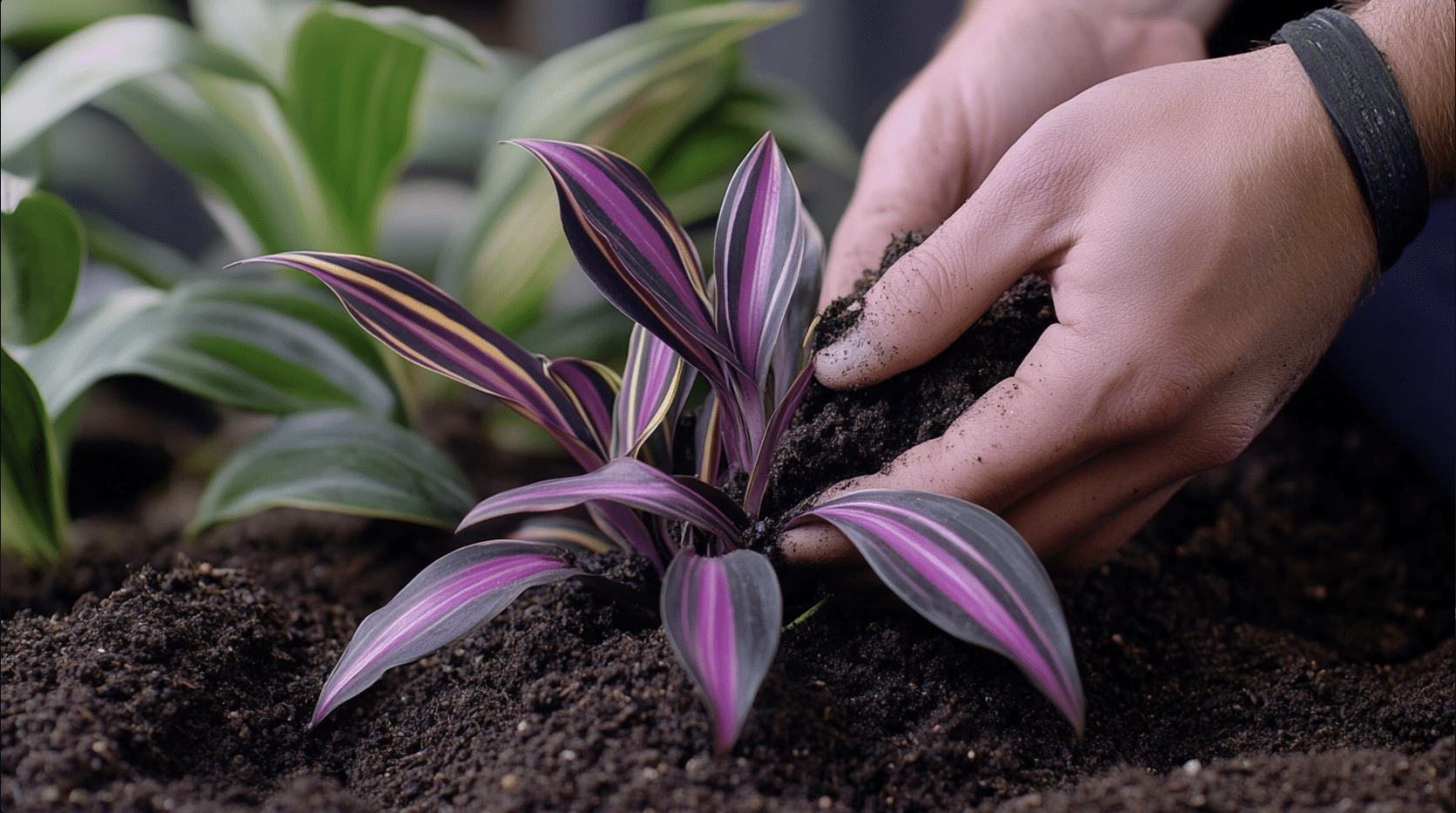
- Take a 4 to 6-inch cutting from a healthy stem.
- Remove the bottom leaves, leaving just the top ones.
- Fill a small pot with potting mix.
- Make a hole in the soil with a pencil.
- Put the cutting in the hole and press the soil around it.
- Water the soil lightly.
- Keep the soil slightly damp but not wet.
- In a few weeks, the cutting will start to grow new leaves.
How to Repot Tradescantia Zebrina
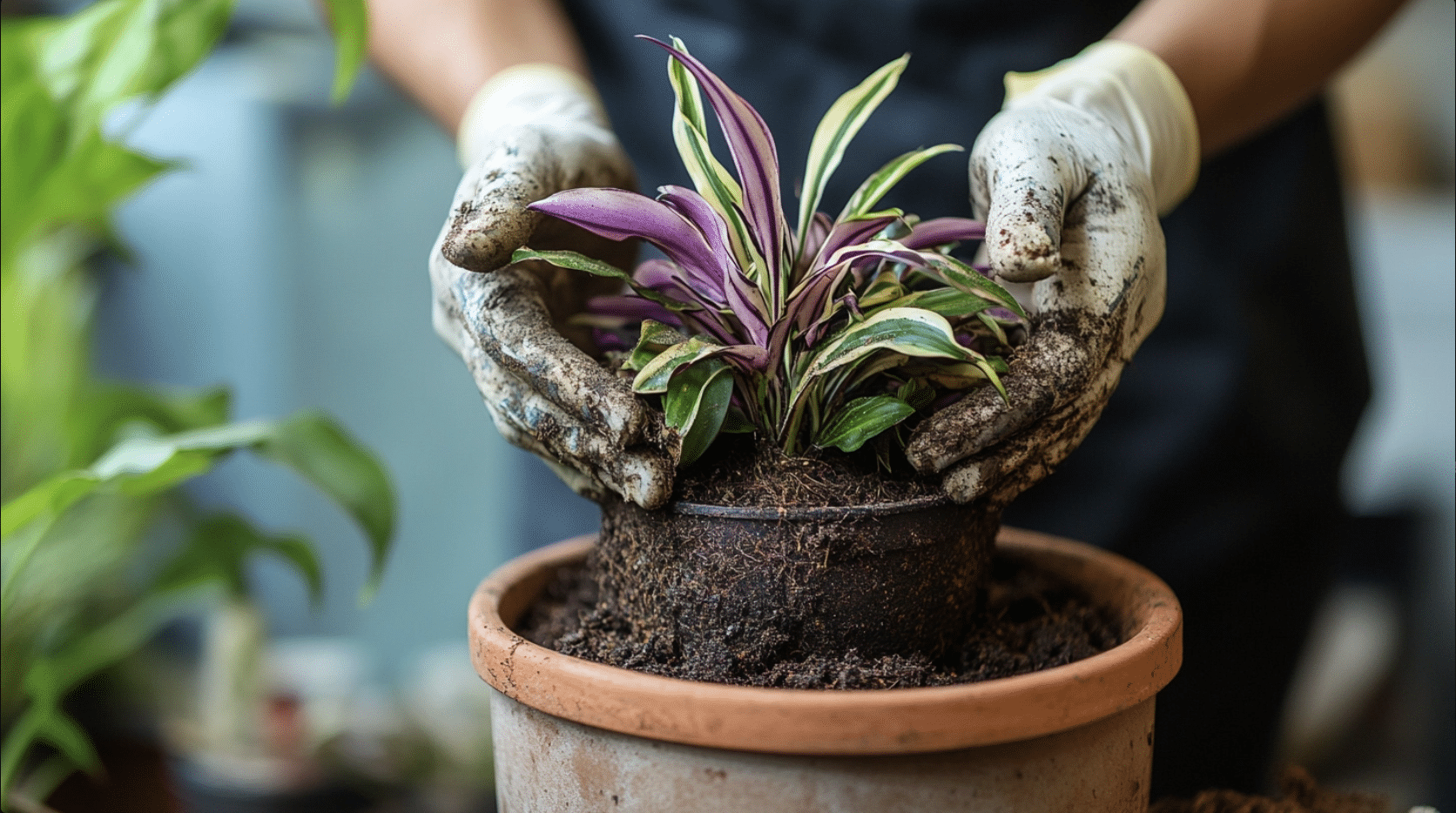
- Choose a pot that is one size bigger than the current one.
- Fill the new pot partly with fresh potting mix.
- Gently take the plant out of its old pot.
- Place it in the new pot at the same depth as before.
- Fill in around the plant with more soil.
- Water the plant well after repotting.
Repot your Tradescantia Zebrina every 1-2 years or when it outgrows its pot. Spring is the best time to do this.
Fun Facts Related to The Wandering Jew Plant
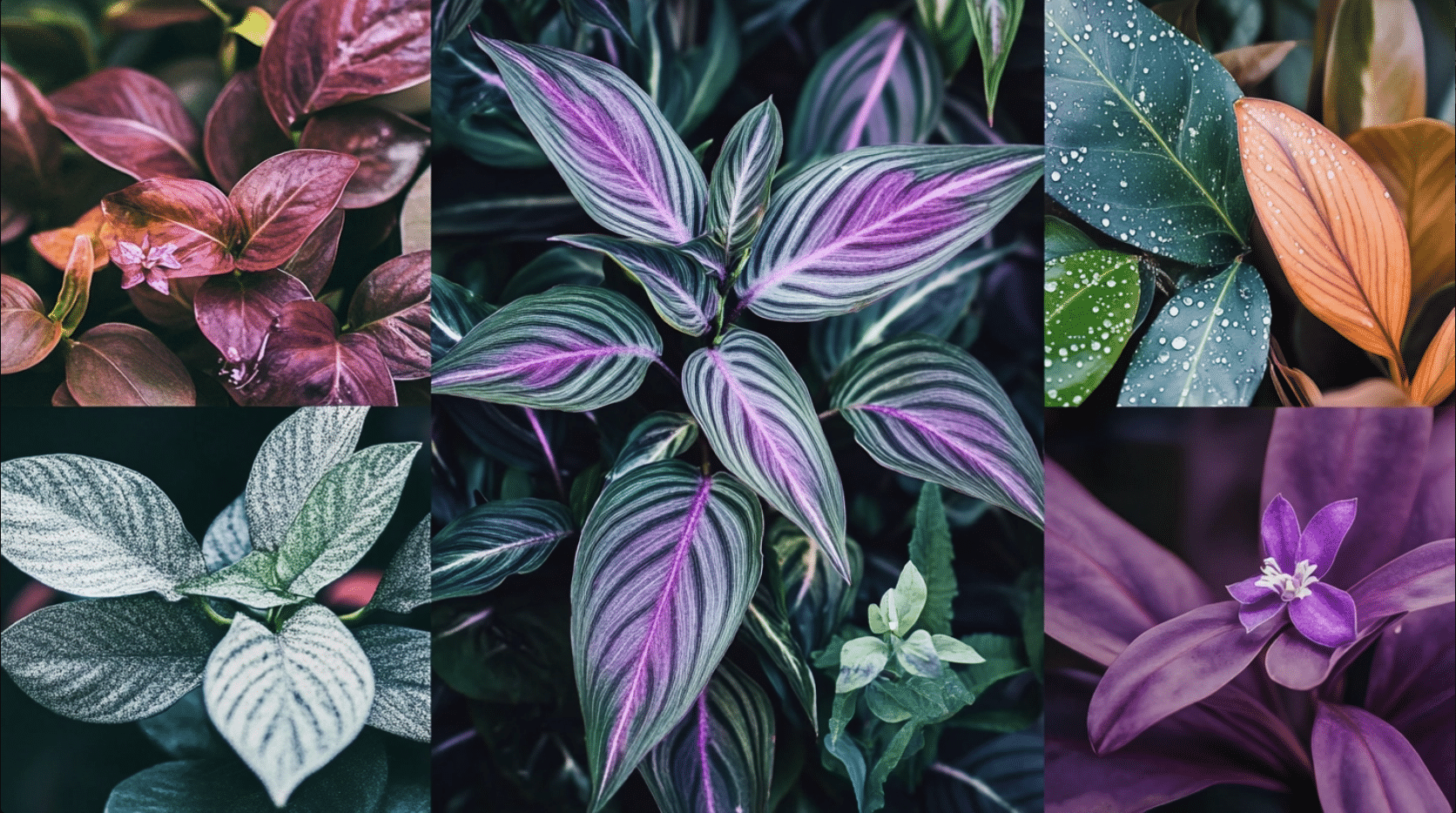
Tradescantia Zebrina is not just a pretty plant. It has some neat things about it that make it special:
- Quick Grower: This plant can grow fast. You might see new shoots popping up in just a month or two.
- Tough Plant: It can survive if you forget to water it occasionally, which makes it great for new plant owners.
- Air Cleaner: Like many indoor plants, it can help clean the air in your home.
- Colorful Stems: The stems can be green or purple, adding to the plant’s colorful look.
- Tiny Flowers: Sometimes, it grows small flowers. They’re usually pink or purple and have three petals.
- Name History: Its genus name, Tradescantia, comes from John Tradescant, an English naturalist.
- Many Names: People call this plant many things, like inch plant, wandering dude, or spiderwort.
- Outdoor Plant: In warm places, people use it as a ground cover in gardens.
- Fast Root Grower: If you cut in water, you might see roots in just a few days.
- Likes Company: In nature, these plants often grow in groups, forming a green carpet on the ground.
These fun facts show why Tradescantia Zebrina is such an interesting and popular plant at home.
The Bottom Line
To wrap up, Tradescantia zebrina is an easy plant to grow and care for. When the soil’s top layer feels dry, remember to give it bright, indirect light and water.
Keep it in a warm spot with some humidity. This plant grows fast, so you might need to trim it now and then. You can easily make new plants from cuttings in water or soil.
Tradescantia zebrina can brighten any room with its colorful leaves and simple care needs. If you’re looking for a low-fuss plant that looks great, why not give it a try? It’s perfect for new plant owners and experts alike.
Add one to your home, enjoy watching it thrive, and spread its unique charm.
Frequently Asked Questions (FAQs)
Does the Tradescantia Zebrina Prefer Sun or Shade?
Tradescantia zebrina prefers bright, indirect sunlight but can tolerate partial shade.
What Is the Typical Lifespan of The Tradescantia Zebrina?
The typical lifespan of Tradescantia zebrina is 2 to 3 years.
How Can I Make My Wandering Jew Plant Bushier?
To make it bushier, pinch off the stem tips to encourage branching and fuller growth.

